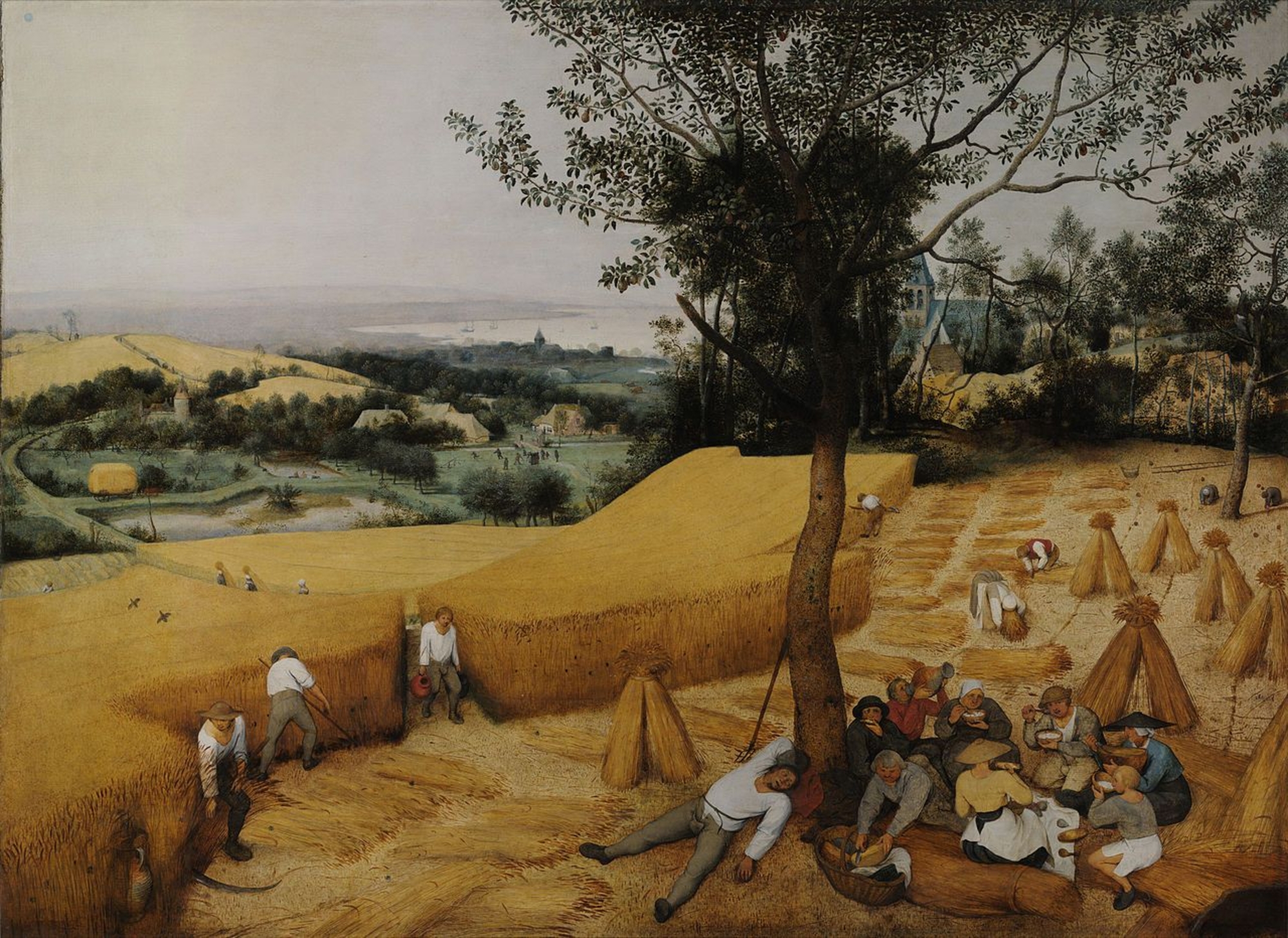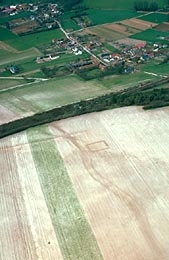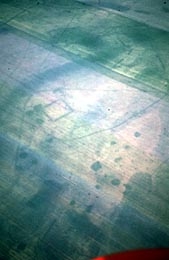- Home
- Discoveries
- Gallic and Gallo-Roman sanctuaries
- Funerary enclosures
Isolated funerary square near an ancient, possibly Gallic, road at Bacouël (Oise).
Large native farm with an exceptionally square layout. Outside this square we can see an isolated square enclosure, probably funerary in nature. Nempont-Saint-Firmin (Pas-de-Calais).
Here a square is associated with a number of pits and trenches. This could be a large necropolis-sanctuary in the proximity of a Gallic village. Fouilloy (Somme).
Funerary enclosures
During the Middle and Late La Tène period, a number of small,moated squares surrounded burials and cremation sites. Aerial prospecting has found them in many places, both in the valleys and on plateaus.
Excavations have revealed that, as for the circles, square enclosures often surrounded funerary tumuli. The small, basically regular squares are four to five meters on a side; larger ones, often less regular in shape, measure from eight to fifteen meters on a side, and sometimes extend up to twenty meters. In a single necropolis, like for example at Tartigny (Oise), the dimensions of the enclosures vary widely, and we should point out that rich graves are not necessarily enclosed.
Funerary squares in the proximity of habitations
Near native farms, aerial photographs have sometimes revealed the presence of a single isolated enclosure, which no doubt corresponds to the aristocratic tomb of the domain's master. One can wonder whether the presence of a great many filled-in pits in the vicinity of certain square enclosures, such as at Fouilloy (Somme), is not indicative of the presence of a large open habitation, like the one found at Acy-Romance (Ardennes) (Lambot, 1996).
Large Gallic funerary enclosures
Sometimes La Tène necropoli are surrounded by vast quadrangular or trapezoidal enclosures some forty meters on a side, like those discovered during recent excavations.
Nevertheless, archaeological digs have also shown that these could be something completely different, as is the case with the aristocratic establishment at Montmartin (Oise), or the religious enclosures that are similar to the sanctuary at Gournay-sur-Aronde (Oise). Aerial photographs are not enough to identify them, and once again, the risk of confusion and erroneous interpretation is great. Thus, the regularity of these large quadrangular enclosures might lead one to think that these are "Roman camps". However, military encampments always have rounded angles, and the corners of the quadrangular Gallic enclosures are right angles.



